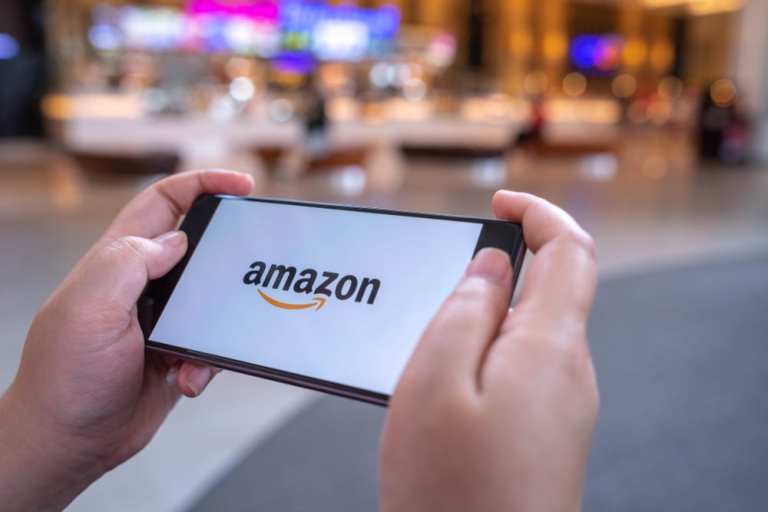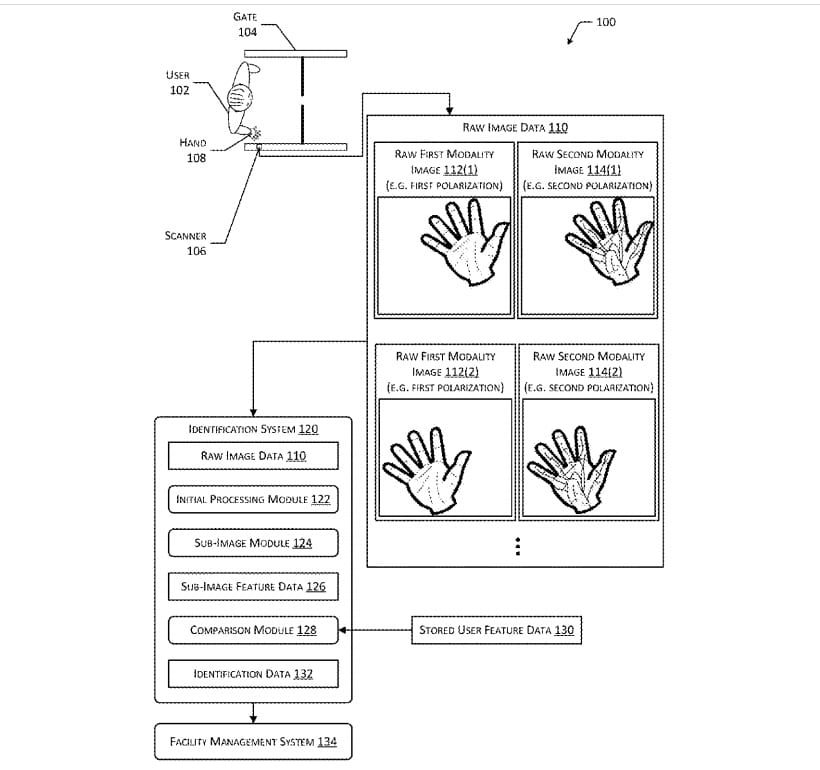
The rumors about hand-based payments out of Amazon have been building for the last few months. In early September 2019, reports emerged that Amazon was testing hand recognition-based payments at Whole Foods locations using its New York employees and some custom-fitted vending machines as an initial experiment. There were also New York Post reports that the technology might make an appearance at Whole Food checkouts this year.
That news was followed by a December patent filing that described “a scanner device [that] is used to obtain raw images of a user’s palm that is within a field of view of the scanner … The first set of images depicts external characteristics, such as lines and creases in the user’s palm, while the second set of images depicts internal anatomical structures, such as veins, bones, soft tissue, or other structures beneath the epidermis of the skin.”

To date, Amazon has offered no official comment on its hand scanning technology. But, if reports initially published in Dow Jones and The Wall Street Journal are accurate, that silence shouldn’t be taken for tepid interest or uncertainty about the future. Quite to the contrary, if the various unnamed sources cited are correct, Amazon is thinking a lot about its hand-based payment technology these days, and not just about how it can be applied to the point of sale (POS) at Whole Foods and Amazon Go locations — as had been previously reported.
Amazon is apparently thinking broadly about hand payments and about how it can expand its ecosystem into more digital commerce touchpoints that it currently controls. Amazon doesn’t seem to just want to change the way customers pay when shopping with them — the bigger goal is to bring the palm as form factor to any place the customer happens to want to transact.
Talk To The Hand, For All Kinds Of Transactions
The plans for bringing hand payments to the world of physical retail are in early stages, and Amazon has offered no official comment on them one way or another, all data comes from unnamed sources “close to the issue.”
What reports indicate so far is that the eCommerce giant is developing technology that will allow consumers to link their card data/Amazon Pay mobile wallet to their palm print alongside payment terminals that will be able to scan that palm print and allow them to make purchases without ever having to pull out a card or phone. Once fully developed, terminals, according to those sources, will be offered to coffee shops, fast food restaurants and other brick-and-mortar retail players with frequent interactions with their customers.
The same sources say Amazon has already started working with Visa to test transactions on the terminals and is in ongoing conversations with Mastercard to do the same. The firm has also reportedly been in discussions with some of the U.S.’s largest card issuers to get the project off the ground. JPMorgan Chase & Co., Wells Fargo & Co. and Synchrony Financial have all reported interested in enabling their customer card accounts to work with the emerging tech, according to sources.
How exactly that technology will operate seems to be a design question still being determined. The September reports about hand scanning technology as tested by Amazon employees and potentially on the way to Whole Foods’ checkout stands indicated it was a contact-based system — customers would have to lay their hands on a scanner.
The technology described in the Dec. 19 patent, on the other hand, describes a “non-contact biometric identification system” that only requires physical contact for the initial customer experience of the technology. From then on, a waving motion was described as potentially sufficient to validate the consumer and make the transaction happen as the terminal makes use of “a hand scanner that generates images of a user’s palm.”
Sources indicate that whatever the specifics of the scanning mechanism that terminals ultimately deploy, the overall design calls for data pass through the terminals along with the transactions, potentially including where consumers are shopping and what they purchase.
That data, according to reports, would be stored on Amazon’s cloud, according to some people, who further noted that data could be integrated with Amazon.com spending information. That could give Amazon more leverage to charge higher prices to advertisers based on the idea they can better predict what customers are likely to buy, the unnamed sources noted.
But while Amazon might like that data, that notion of handing it off to them might be what makes this project have some difficulty getting off the ground.
The Path Ahead
Amazon, as reports note, has some things to demonstrate before it can begin pushing its hand payments technology onto the market at large. The first is, unsurprisingly security and fraud protection, and how well the new terminals are equipped to deal with it.
One key area of concern among issuers, according to The Wall Street Journal, are bad actors who attempt to link their hands to stolen cards, and how the system will identify such fraudulent transactions. The system could blacklist fraudsters but, most experts noted, that only stops them for their next fraudulent transaction, it doesn’t stop the first one.
Issuers are also reportedly concerned about how consumers with more than one card account will be able to switch which card they are paying with during any given transaction if they are paying with their hands.
And then there are the two unknowns — will consumers be into using their hands as a form factor, and will merchants be excited to invite the Amazon fox into their data hen houses?
Paying by palm might appeal to consumers, or it might be a data bridge offering too far for customers who have already handed over a lot of data to tech firms already. And even if consumers aren’t concerned for privacy reasons about paying by palm, there is no guarantee that they will be all that interested in doing it. As countless mobile operators have already learned, the U.S. customer base doesn’t mind using credit cards, and so merely opening up the option to pay by palm might not be enough on its own to force customers to ditch their cards.
And unless it is very popular with consumers, it also remains to be seen if brick-and-mortar merchants will be eager to use Amazon’s point of sale technology, knowing that they will be offering Amazon a peek at every transaction they do with it per day. Without a very big incentive to do so, like an overwhelming wave of consumer demand, coffee shops and quick-service restaurants (QSRs) might not be eager to help Amazon’s efforts at gathering more accurate consumer data.
But then reports at this point are still based mostly on the data of unknown sources, a patent filing and some early reports about a possible pilot rolling out at Whole Foods later this year. At this point, it is safe to note that there are more unknowns than knowns, including what other goodies and incentives might come riding in with hand-based payment in the future. There might be a lot more reasons coming for consumers to try it and merchants to accept it than meets the eye in the early days.
Because what does seem clear from even the early details, is that Amazon is interested in shaping how consumers transact across the board, not merely when they’re in the Amazon ecosystem, an effort consistent with its expansion into bill payments, connected commerce among a host of other areas. And how these efforts to transform commerce by reimagining payments will knit together in 2020 will likely be one of the big stories of the year.